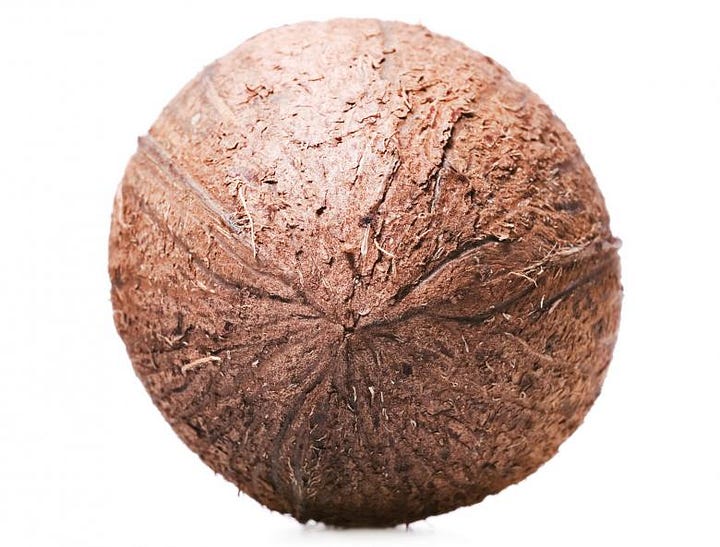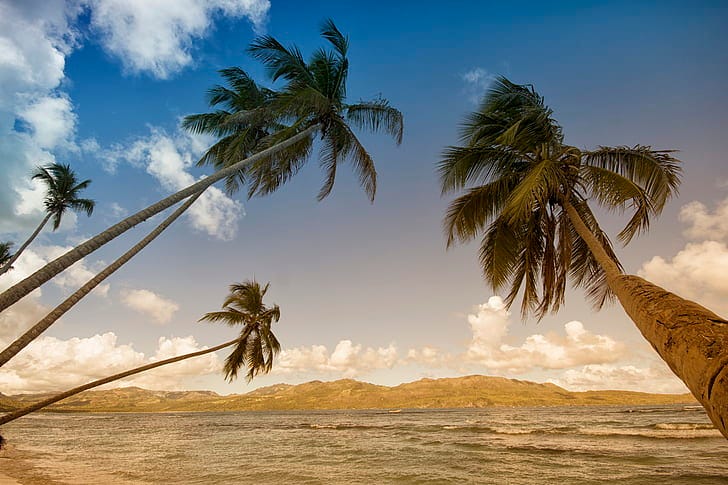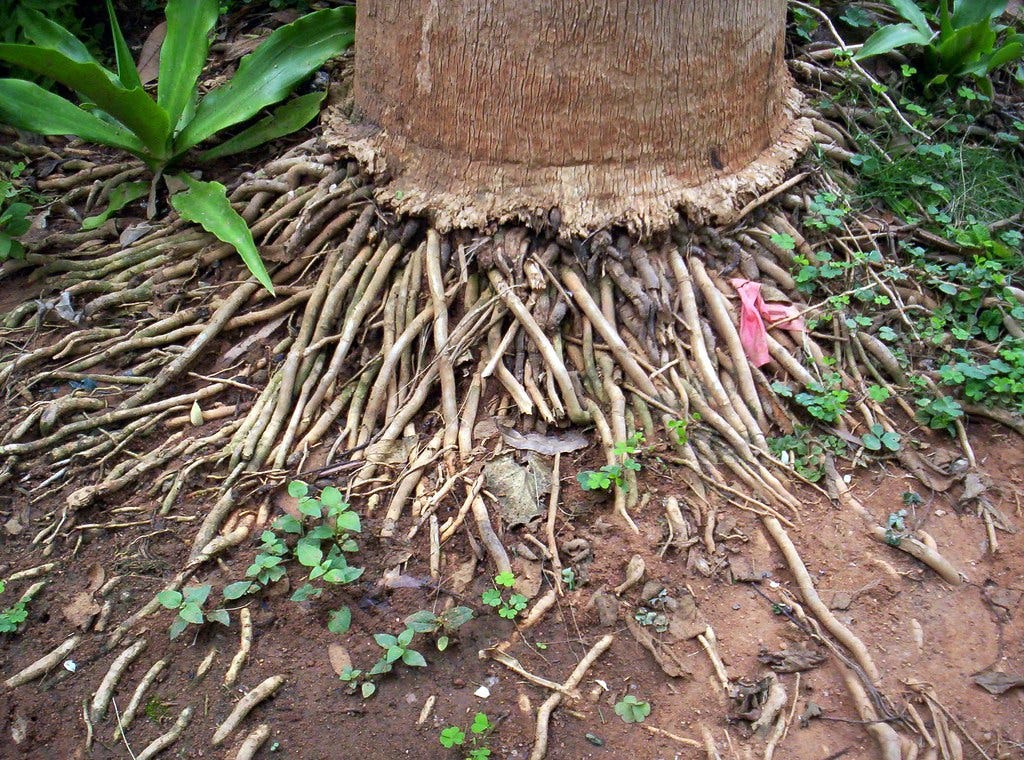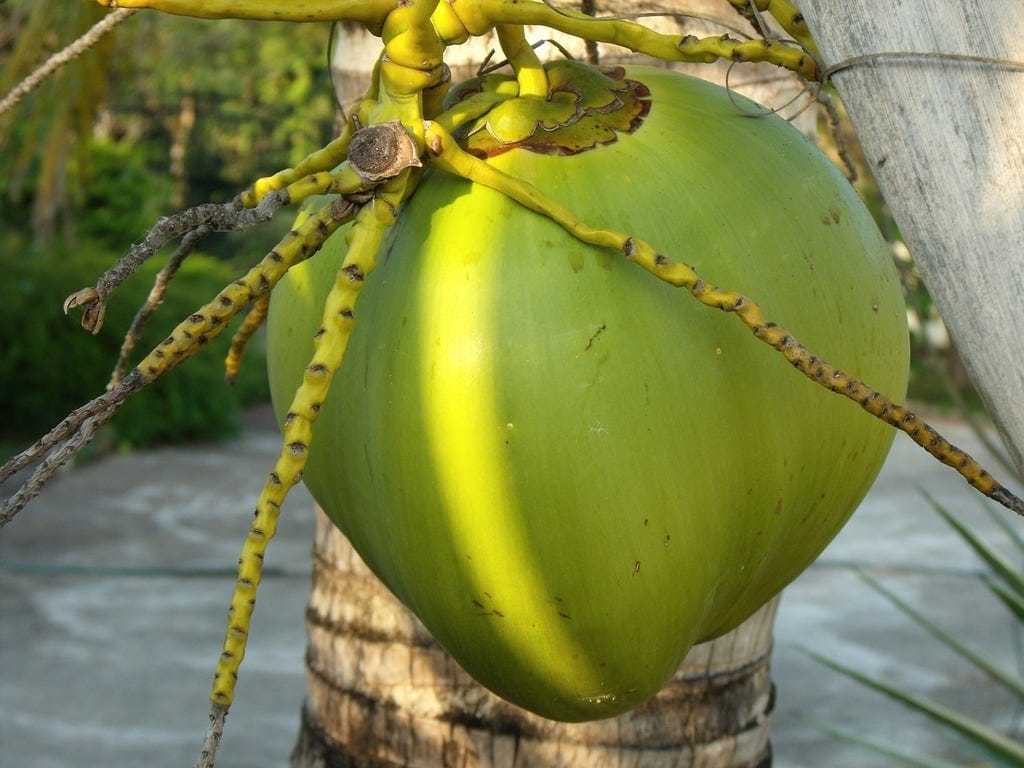A Coconut Tree’s Perspective: My Journey Through Time and Tide
How can I evolve over millions of years without facing extinction? I have pondered this question for ages.
(Fun fact: The oldest coconut fossils, found in Gujarat, date back 37 million years!)
I need plenty of sunlight, so I thrive between 23 degrees north and south of the equator. I settle along coastlines with heavy rainfall because I require 100-150 liters of water daily to produce abundant fruit. Coastal areas are perfect since fresh water naturally floats above seawater, making it easier for me to absorb.
Strong winds and coastal storms may try to knock me down, but I am prepared. My adventitious roots anchor me firmly in the soil, while my flexible trunk, reinforced with a strong lignin core, helps me withstand even the fiercest winds—and sometimes tsunamis. My leaves stretch high, soaking up sunlight like solar panels to generate energy, most of which I use to nourish my most precious treasure: the coconut.
I grow my fruit high up, safely out of reach from pesky humans and animals. At six months, my coconut is filled with liquid endosperm, or coconut water, enclosed in a hard shell and wrapped in a fibrous husk. Initially, the inner layer surrounding the liquid is soft and gelatinous, but by 10 to 12 months, it hardens into a firm, solid kernel. When fully mature, the kernel contains approximately 33% oil, 50% water, 5% protein, and the rest carbohydrates.
Since I don’t rely on animals for seed dispersal, I have designed a remarkable packaging system for my large seed. My fruit is engineered to float on seawater, allowing it to travel vast distances. It can survive over 110 days at sea, covering up to 4,800 kilometers. This is how I have colonized countless remote islands for millions of years—long before humans arrived. Once my fruit reaches a beach, its angular shape prevents it from rolling back into the ocean. Instead, it takes root at the top of the beach, growing into a strong, majestic tree.
Humans pride themselves on technological innovation, and they seem fascinated by my sweet water. Containing about 5% sugar and 1% minerals (mainly potassium, calcium, magnesium, phosphorus, and sodium), my water is harvested at its peak sweetness around seven months. However, it took them years to figure out how to bottle it without ruining the flavor. Heat pasteurization altered the taste, but they eventually developed an expensive method called High-Pressure Processing (HPP)—a non-thermal pasteurization technique that extends shelf life to four months. Still, my natural design keeps the water fresh for months, hermetically sealed to nourish the growing embryo.


Humans once discarded my hard shell after using it as a cup for piña coladas. Today, they recognize its true potential: my shell can be turned into activated carbon, a material used in air and water filters, gas masks, toothpaste, and even deodorants. The process involves charring my shell at high temperatures (300–500°C) and process it to enhance its pollutant-trapping abilities.
My fibrous husk, which helps me float, has also found many uses. For centuries, it has been woven into ropes and mats. Recently, humans have discovered its effectiveness in gardening and hydroponics. Known as coco coir, it comes in two forms: strong brown coir from ripe coconuts and flexible white coir from unripe ones. Brown coir, often used in hydroponics, undergoes extensive processing—soaked, dried for over a year, then chopped into chips or ground into coir dust. It absorbs up to 10 times its weight in water, promotes healthy root growth, and enhances aeration.
I have come to terms with humanity’s love for me. They work hard to propagate my species across various regions. However, I caution them not to take their admiration too far.
Consider the story of August Engelhardt, a German who, in the early 1900s, founded a religion worshiping coconuts. He believed humans should live solely on coconuts, considering them divine due to their resemblance to human heads. He even wrote a pamphlet titled A Carefree Future: The New Gospel and moved to Papua New Guinea with 15 followers to live by his "coco-gospel." While I am flattered by his devotion, his experiment ended in tragedy—Engelhardt died in his 40s, and his followers abandoned him.




